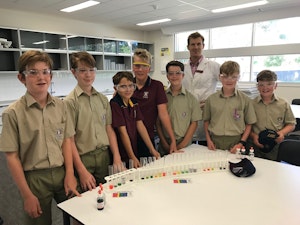Chemistry Club: For boys who question, create and search!
Chemistry Club is an exciting opportunity for young chemistry enthusiasts to plan, experiment and evaluate innovative ideas that might contribute to a more sustainable future of our planet. We started the year with a bang (literally) after the ignition of a hydrogen filled balloon, signalling the official start to the club. The boys reacted acid with magnesium and carried out the "squeaky pop" test. Written records indicate that Robert Boyle produced hydrogen gas as early as 1671 while experimenting with iron and acids. Hydrogen was first recognised as a distinct element by Henry Cavendish in 1766.
Today we know so much more about this reactive gas in terms of chemical properties. Could hydrogen with its clean combustion products be the next fuel for vehicles replacing petrol? Hydrogen inspires thought; it is the most abundant element in the universe and is responsible for nuclear fusion in the formation of stars. Here on Earth, apart from its importance in making up water, hydrogen in some form is found in all living organisms.
More recently, the boys have enjoyed colourful displays of acid and base chemistry and the use of indicator in finding the solution pH. The word acid immediately prompts thoughts of danger, although a strong alkali (pH=14) is far more corrosive than a weak acid (pH=4, vinegar). Next session, the boys will make their own indicator using red cabbage leaves and test some household liquids. We look forward to more fascinating experiments in Chemistry Club this year!

Mr Toby Robinson
Middle School Science